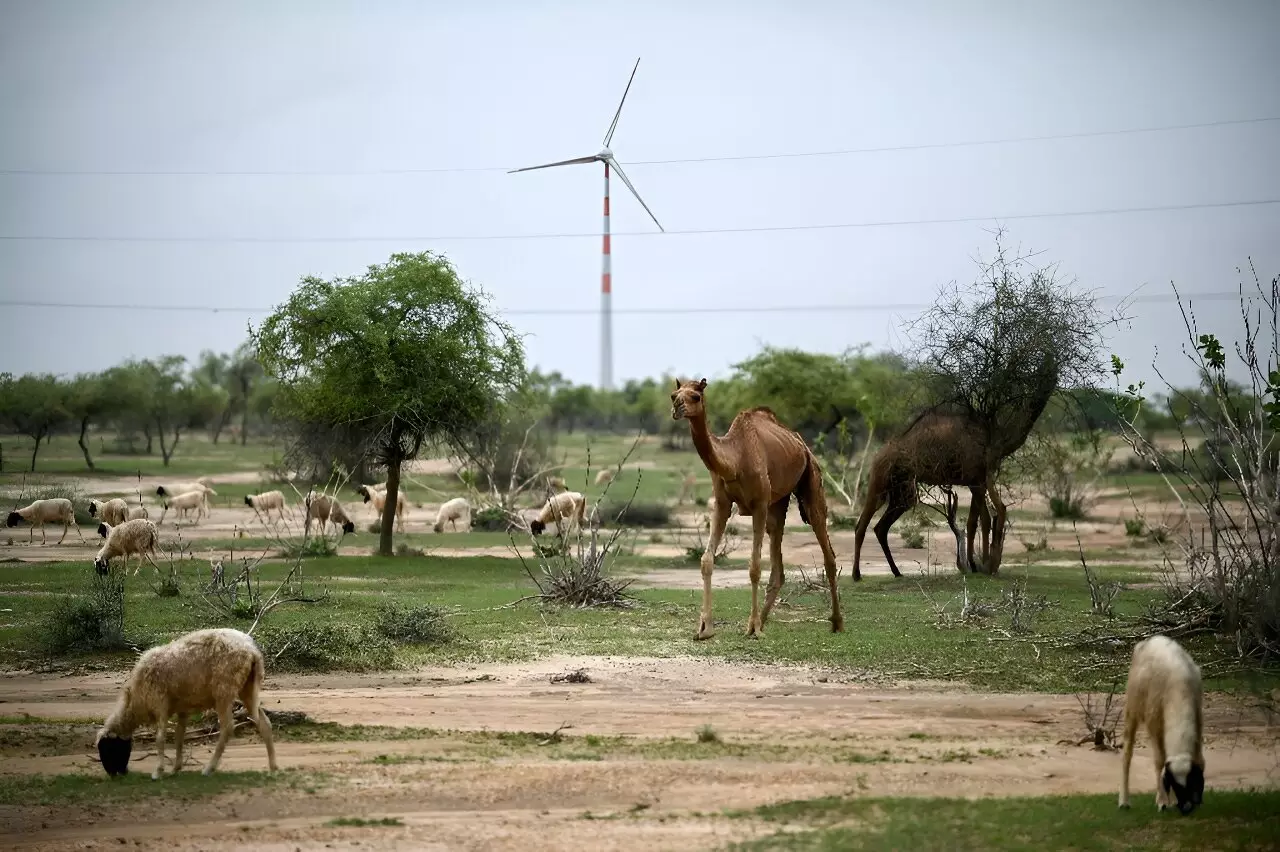In the vast expanse of India’s Thar Desert, wind turbines stand as symbols of the country’s ambitious plans to transition to renewable energy. These colossal structures produce clean energy for a nation grappling with climate change, yet the local population finds itself increasingly marginalized by the very projects that are supposed to benefit the collective future. The profound disconnect between governmental energy policy and grassroots realities exposes the bitter truth of an ostensibly virtuous endeavor: the sacrifices made by the communities that lie in the shadows of these windmills.
India, recognized as the third-largest greenhouse gas emitter globally, is under immense pressure to enhance its non-fossil fuel energy capacity. While initiatives such as expanding wind farms offer a path towards sustainability, the repercussions on local ecosystems and the livelihoods of indigenous communities cannot be overlooked. As heatwaves scorch the land and erratic weather patterns wreak havoc, local herders like Nena Ram experience the brunt of climate change impacts compounded by industrial energy projects. He articulates a sentiment echoed by many: “The big companies have come here and built the windmills, but they’re useless to us.”
For pastoralists in regions like Rajasthan, the encroachment of wind energy infrastructure has meant the loss of grazing lands and sacred groves, known locally as “orans.” These areas serve as essential water collection points, sustaining livestock crucial to the local economy. Instead of promoting sustainability, the construction of wind farms disrupts this delicate balance, harming long-standing agricultural practices in favor of state and corporate objectives.
This juxtaposition underscores a grim reality: while large corporations, such as the Adani Group and Suzlon, claim to support local communities by integrating health and educational services, these promises often fail to materialize in a meaningful or effective manner. Reports of declining milk production and the frustrations of local farmers illustrate that the cost of these green initiatives is borne disproportionately by those who depend on the land.
Jitendra Kumar, a local health worker, reflects a wider sentiment, stating, “The farmers are paying the price… Windmills occupy the land meant for cattle grazing.” In an area where communities once thrived, the shadow of these turbines looms larger every day, creating a sense of helplessness and despair among the inhabitants.
As India’s cities experience a surge in energy consumption, rural areas like Jaisalmer find themselves trapped in a paradox. Power lines snake through the desert, channeling electricity to industrial hubs and urban centers while leaving locals in the dark. Sumer Singh Bhati, an environmental activist from the region, describes daily life punctuated by frequent power cuts, stating, “We are leading our lives in darkness.” With blaring temperatures piercing through summer months and the recent record longest heatwave, the situation is further exacerbated, revealing the urgent need for a fair energy distribution approach.
Despite government ambitions to ramp up renewable energy generation to 500 gigawatts by 2030, the infrastructural realities present a stark contrast. While expansive projects are being hastily build in the pursuit of these targets, communities continue to voice their struggles, reminding us that development should not only focus on numbers, but also respect the environmental heritage and social fabric of affected regions.
The development of wind energy also carries unintended environmental consequences that extend beyond the human experience. From rare species like the Great Indian Bustard to local ecosystems rich in biodiversity, the implications of these energy projects are dire. Environmental activists argue that the area is far from a barren desert, representing a crucial habitat that must be preserved to maintain ecological balance. Parth Jagani, an activist in Jaisalmer, cites the increase in bird fatalities due to turbine and overhead power lines, highlighting a critical area of concern for sustainability.
This raises a debate surrounding the moral and ecological responsibilities of energy transitions. While ambitions towards renewable energy are noble, they pose significant challenges regarding the coexistence of industrial agendas with local ecosystems. The Supreme Court’s order to bury power lines in breeding areas was overturned under governmental pressure—a decision that only underscores the lengths to which energy goals are prioritized over environmental protection.
As India propels itself toward a greener future, the need for balance between environmental progress and local livelihoods has never been more pressing. The stories of residents like Nena Ram serve as poignant reminders that initiatives promoting clean energy must not overlook the foundational social structures that depend on the land. The intricate interplay of climate change impacts, rural economies, and industrial ambitions demands a comprehensive strategy that seeks to harmonize these often conflicting needs. Only through solidarity and sustained dialogue between policymakers and affected communities can true sustainable development be achieved—transforming desolation into resilience rather than sacrificing the present for an uncertain future.

